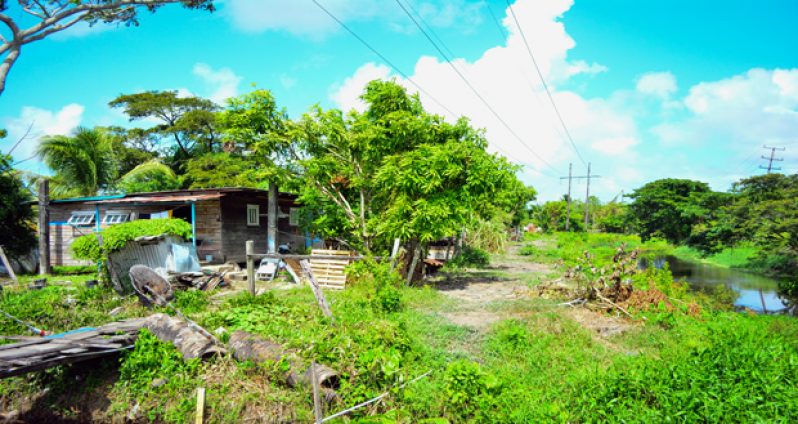CREATIVITY is a striking characteristic of the Greater Georgetown community of Plum Park! A veritable paradise within an otherwise regular community, Plum Park is located at the anterior of Sophia. And though residents have battled victoriously for progress, they are now seeking the hands of government to take them a little further, with new infrastructural installations.
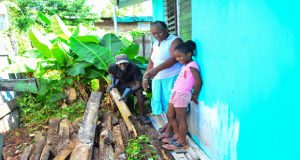
Plum Park is a blessed place. Located near the national exhibition complex, the U-shaped community of just two blocks has more than a hundred households, residents say.
Fertility is widely evident from beginning to end, and as you cruise the community, kitchen gardens and fruit farms unfold, even amid a number of trees still rooted deep, standing tall within a meadow where sheep and cows spend their days under the watchful gaze of their minders.
ITS ORIGINS
One look around the community and one might find it hard to believe how it came into being, and to become the sanctuary it is today.
Plum Park began with Edmond Moore. He and partner, Tyrone Fordyce visited the block at the front of Sophia, initially to try their hand at farming, but later decided to seek residential accommodation as they became tired of being somebody else’s tenants.
At the time, Moore was renting a house on Duncan Street, Campbellville, and as his family began to extend, he thought it wise to make more important use of the money he was paying to live there as additional needs arose within his household.
It was almost a jungle, but Moore and Fordyce, together with a few others who developed an interest in the place, cut down the vegetation, built up the swampy areas and squatted for a while, naming the then newly formed community Plum Park.
Following a few visits to the Ministry of Housing, then government minister Dr Henry Jeffrey endorsed a proposal for what was then nothing more than ‘a squatting area’ to be legally regularised into a residential community.
AMAZINGLY QUIET
Plum Park is a beautiful place; an amazingly quiet ‘green’ space. With a few small shops and one big grocery store, residents do not have to travel far for stocks.
Moore, who became the village’s first chairman, explained that the community got its name from the plum trees, which was the dominant species of vegetation in the community at the time of its founding.
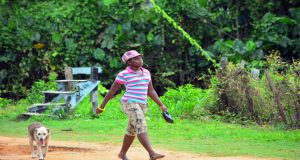
And if residents were to have their way, and with the government’s help, it will become the idyllic, upscale neighbourhood they’ve always dreamed of.
“At this stage,” Moore said, “we have a new government; so, we’re kindly asking and calling to the government. As the people who living in Plum Park, to the government of this day, we need help from them; we need road lights… In case of any fire or anything of a serious nature… we walking pon mud; we need help! Plum Park need help!”
GROWING POPULARITY
Jillian Jemmott, popularly called ‘Ann’, said she moved into Plum Park two days before Christmas back in 1998.
She describes Plum Park as calm, quiet and cool, but says that now that the area is becoming popular, residents have been forced “to be very careful,” largely due to the lack of adequate street lighting among other security measures and necessities.
“We need good roads; we need lights, good communication, and we good to go,” Jemmott said, adding:
“These house lots must be well prepared for people. People live on these lots for a very long time, and they’re still not regularised. Now that this new government in, we hope that they do something, and that they speed up on it; it’s overbearing, and it’s time they get busy with it.”
Just behind her house is the Plum Park reserve on which many still squat, and are calling out for their own lands, so that they, too, can enjoy the liberty of having their own transported land and legally recognised homes.
STILL WAITING
One man who has been living on the reserve with his family for 23 years now said that although he’s made several efforts to improve his lot, he’s still waiting to be blessed.
“Government can find lands and let houses be built on them… They need to pay their bills; get their things in order; they need to get their transport,” a neighbour of his interjected.
Wynette Jacobs explained that while a majority of the community’s residents work in the public service and other commercial offices around the city, some eke out a living by rearing poultry and cattle, with a little fruits and cash crops thrown in on the side.
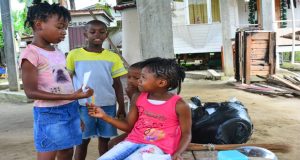
Surprisingly, littering is unheard of in Plum Park, as residential compounds and streets alike are kept spic and span, with flower gardening being a common activity.
And while the Plum Park Development Community is fairly young, having only been formed four months ago, its secretary, Trevonne Williams says that its prime objective is to take charge of things around the community, while that of his colleague youth leader, Leroy Moore is to make a list of the many things the community still needs, which he feels can be realised with the help of the government.
Plum Park, according to Williams, is separated from A-Field Sophia by two canals, and his group is now positioned to take progress to a whole new level.
“The mission of the group is to develop the area in terms of infrastructure,” he said. “We are trying to put water and proper roads and drainage in place, and are working towards the development of a recreational park.
“One of the objectives of the group is to pursue infrastructural development, and push for the official naming of the area as a city community.”
While residents have done many things over the years for themselves by way of self-help, such as the maintenance of drainage and other infrastructural works, there is no adequate facility to accommodate recreation, though the area has a football team.
“We have no community centre; no health centre; no police outpost,” Williams lamented, adding that residents seeking medical attention and such other services have to go all the way to Campbellville, which is some distance away, to get it.
FACILITIES
The group has identified an area where the facilities at reference can be erected, which is not far away from the only institutional structure the area boasts.
“The only access we have is to the agriculture school, where students from different schools around the city visit to do practical work,” Moore said.
And while on the subject of agricultural training, he is calling for the restoration of the Guyana National Service (GNS), which he says has always had the capacity to empower youths, equipping them with skills for the workforce.
“Year go, year come, is one thing all the time! We need job creation within the community itself,” Moore said, adding: “It had the li’l national service; now there’s nothing for youths to fall back on. Youths used to establish themselves; learn a li’l trade, so that when they go out in the working arena, they could able to do certain things for themselves, and even build things within the community.
“If government could create something within the community itself, it would be good.”
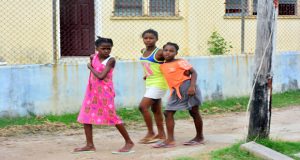
Moore said while citizens work in unison with “a little self-help programme” cleaning drains, and such, there is no financial assistance, and neighbours have to put together resources to provide meals.
“This place needs development; it needs street lights. You will find li’l petty robbery in here. Young ladies working and coming home late, nuff of them get rob… and it could be worse… That is why we does keep cleaning up the place on a regular basis. But if we could get help from the government, it would be real nice.
“When the rain fall, the place does flood and get muddy, but people still go through… But if we could get a proper road and a proper drainage fix for here, it would be really good,” he said, adding:
“As a young community, we really trying.”
By Shauna Jemmott



.jpg)



